Meet the World Teams: Women's Medal Favorites
Meet the World Teams: Women's Medal Favorites
Meet the World Teams: Women's Medal Favorites
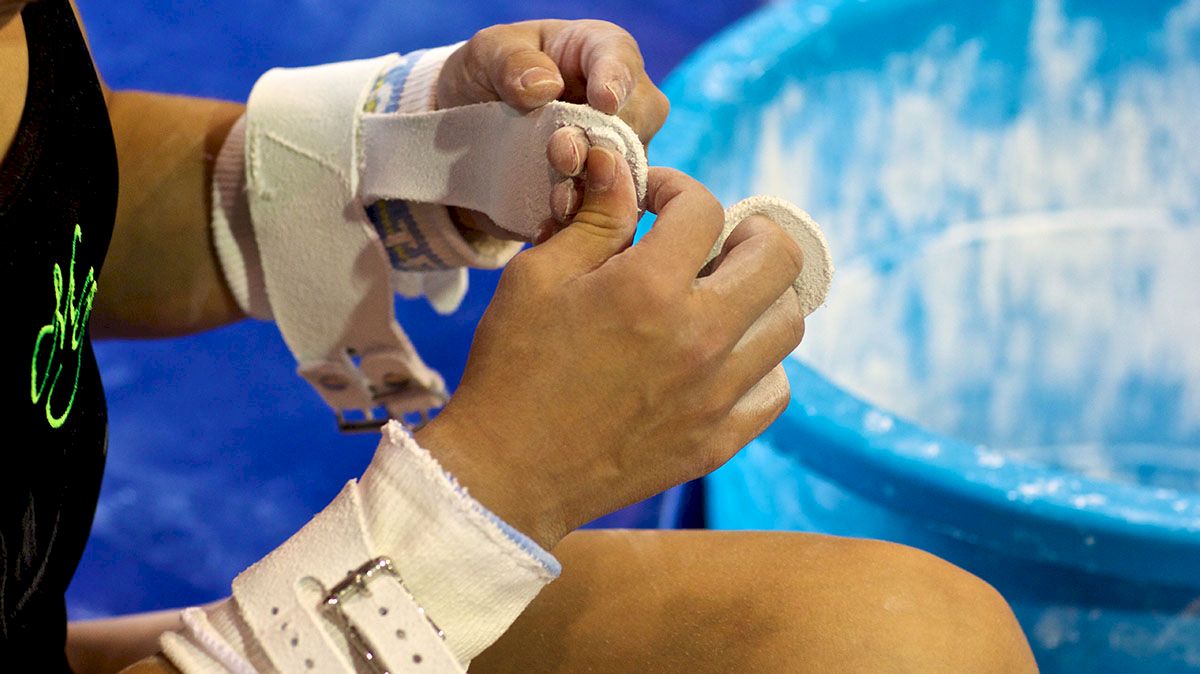
Although eight countries will advance to the women’s team final, the battle for gold, silver, and bronze will likely involve four teams: Russia, the United States, China, and Romania. These perennial powerhouses are distinguished by their difficulty, execution, and depth. At last year’s World Championships in Rotterdam, Russia grabbed the gold, with the United States, China, and Romania second, third, and fourth, respectively.
Below is a preview of each team’s strengths and weaknesses heading into Tokyo. Teams appear in the order that they finished in Rotterdam.
Russia
Team members: Ksenia Afanasyeva, Yulia Belokobylskaya, Anna Dementyeva, Viktoria Komova, Tatiana Nabiyeva, and either Alyona Polyan or Yulia Inshina
Russia enters Tokyo without reigning world all-around champion Aliya Mustafina, who tore her ACL on vault during April’s European championships. An uncommonly gifted athlete with steely resolve, Mustafina would have contributed difficult routines on each apparatus. Her equally talented teammate, first-year senior Viktoria Komova, fractured her ankle last December and underwent surgery in May when the ankle wouldn’t heal. She will compete in Tokyo, but whether she can perform her full difficulty remains to be seen. In a third blow, a Tuesday tweet on the International Gymnast website announced that Maria Paseka has withdrawn from the competition with a hamstring injury, and will be replaced by either Alyona Polyan or Yulia Inshina.
In spite of these problems, the team that Russia has assembled for Tokyo is actually quite strong—a testament to the depth of the Russian program. Russia may not be the clear favorite for gold, as they would have been with Mustafina and a completely recovered Komova, but they should still be able to contend.
On bars, Komova’s ankle is not a factor, and her routine is packed with difficulty, including a Shaposhnikova, Shaposhnikova-half, Pak, Tkatchev, and layout Jaeger. Her teammate Nabiyeva is inconsistent, but could contribute a big score; she competes an exciting piked sole circle to layout Tkatchev, and scored 15.1 at September’s Dinamo International. On beam, Komova and Anna Dementyeva, the current European all-around champion, are both capable of very strong routines, and the team is sublime on floor. Dementyeva, Komova, Ksenia Afanasyeva, and Yulia Belokobylskaya all dance beautifully, and have some strong tumbling to boot. Vault is a bit more complicated. In Rotterdam, Russia competed two Amanars; in Tokyo they might have to make do with none. Of the four Russian gymnasts who are capable of the vault, Mustafina and Paseka are out, Komova has not been competing it because of her ankle, and Nabiyeva has not been able to land hers with any consistency. If Komova and Nabiyeva attempt their Amanars and land them cleanly, Russia’s chances will improve dramatically.
The United States
Team members: Gabrielle Douglas, Anna Li, McKayla Maroney, Alexandra Raisman, Alicia Sacramone, Sabrina Vega, Jordyn Wieber, alternate TBD
Many gymnasts committed errors at the national championships in August, but the worlds outlook for Team U.S.A. is rosier than the performances in St. Paul might suggest. While gold is by no means guaranteed, the U.S. could pull it off. The team will certainly feel the loss of two-time world all-around medalist Rebecca Bross, but helping fill that void will be Jordyn Wieber, a favorite for this year’s all-around title. Looking at the probable line-ups for the team final, the U.S. boasts some pretty difficult routines—and in the age of open-ended scoring, high D-scores are a strong advantage, even when a team makes some mistakes.
That's probably why the U.S. selection committee took a gamble on Gabrielle Douglas and Anna Li, athletes who could appear in the bars line-up along with Jordyn Wieber. In spite of their inconsistency, Douglas and Li possess potential D-scores of 6.4 and 6.7 respectively, and both gymnasts are sensational when they hit. While bars is a wildcard event, vault should be smooth sailing. In Rotterdam, the U.S. competed two double-twisting Yurchenkos and Alicia Sacramone’s handspring-rudi; in Tokyo, if all goes as expected, the line-up will include Sacramone’s powerful rudi as well as Amanars from Wieber and McKayla Maroney, making the United States the strongest vaulting team in the world. The Americans are not as spectacular on beam, but the gymnasts likely to compete in that rotation—Sacramone, Raisman, and Wieber—are capable of putting together a solid effort. On floor, it will be interesting to see whether the U.S. decides to put Maroney up in the final with the same routine she used at nationals. Her routine is charming and features a 3½ twist, but she has trouble standing up her final pass, a double Arabian. Sabrina Vega is beautiful on floor, and more consistent than Maroney; she could appear in the line-up if not relegated to the alternate position.
China
Team members: He Kexin, Jiang Yuyuan, Sui Lu, Tan Sixin, Wu Liufang, Yao Jinnan, alternate: Huang Qiushuang
When the Chinese announced their team for Tokyo earlier this month, many were surprised to see Huang Qiushuang, who placed fourth all-around in Rotterdam, in the alternate position. But looking at the strength of those who edged Huang for a spot, the decision seems reasonable. The Chinese have assembled a formidable team that will be in the thick of the medal hunt, and could even seize gold.
China will gain its biggest advantage on the uneven bars, where its scoring potential is well above the rest of the world’s. Reigning Olympics bars champion He Kexin performs a full-pirouette to elgrip, Jaeger to cross-grip, Jaeger combination, and has D-score potential above 7.0. Wu Liufang also has an excellent routine with consecutive elgrip fulls to a Jaeger, and Jiang Yuyuan earned a bars silver medal at the recent World Cup in Ghent. The Chinese are equally superb on beam, where Wu, Tan Sixin, and Sui Lu all boast beautiful extension, flawless leaps, and exciting acrobatic elements. In particular, Tan’s opening acrobatic series—back handspring, back handspring, layout to immediate Korbut—is a breathtaking piece of gymnastics. Although floor is not China’s strength, they should be able to put together a solid effort in Tokyo. Sui is very good here, opening with a whip-immediate triple full; Yao Jinnan is a powerful gymnast who is capable of a double layout as well as a triple twist; and Tan has a nice routine that she ends with a lovely 2½ twist-split leap. Vault is China’s weakest event, characterized by a lack of difficulty and power. Still, four of the Tokyo team members can complete a double-twisting Yurchenko. If China survives the event with a respectable total, they will be in the hunt for gold.
Romania
Team: Daniela Andrei, Diana Chelaru, Raluca Haidu, Catalina Ponor, Ana Porgras, Amelia Racea, alternate: Diana Bulimar
On Thursday, Romanian gymnastics was dealt a blow when Sandra Izbasa was forced to pull out of worlds with an injured foot. Izbasa is the 2011 European champion on vault and floor, and was expected to contribute big scores on both events. With Izbasa on the team, the Romanians were still a long shot for gold, but securing silver or bronze was a very realistic goal. Now, a top-three finish will be a bit more difficult to attain.
It’s a shame, because Romania has been getting better and better over the past year, particularly with the comeback of Catalina Ponor, the 2004 Olympic champion on floor and beam. This gymnast has shown the true extent of her talent, mastering new routines in a short amount of time.
Ponor is capable of contributing a big score on beam, an event where Romania is perhaps the best in the world. She attacks the apparatus with supreme confidence, showing a double turn and rock-solid tumbling. In addition to Ponor, Romania has Ana Porgras, the reigning world beam champion, and Amelia Racea, the 2010 European beam winner. Porgras performs a wide variety of skills with style and poise, and Racea competes a beautiful tucked-full. Romania is also very good on floor, where, even without Izbasa, they should be able to present strong routines from Porgras, Ponor, and Diana Chelaru, who won silver on the event in Rotterdam with powerful tumbling and delightful choreography. Uneven bars is a Romanian weakness, however, as it has been for years. Porgras was a bars finalist at last year’s worlds, but none of the other gymnasts on the squad are capable of a big score. They will face similar challenges on vault, an apparatus where the loss of Izbasa, reigning European champion on the event, will be felt keenly. Racea, Chelaru, and Raluca Haidu compete a double-twisting Yurchenko, but do not execute the vault as well as Izbasa. To stay in the medal hunt, the Romanians will need to pull out all the stops and perform bars and vault to the absolute best of their ability.
The Bottom Line:
In the end, predictions are just that: predictions. Each of these teams is capable of world-class gymnastics, and it’s sure to be an exhilarating battle. I’ll be in Tokyo for the team final, and providing Gymnastike readers with a post-meet recap. Stay tuned.
Tan Sixin beam:
Catalina Ponor beam:
Below is a preview of each team’s strengths and weaknesses heading into Tokyo. Teams appear in the order that they finished in Rotterdam.
Russia
Team members: Ksenia Afanasyeva, Yulia Belokobylskaya, Anna Dementyeva, Viktoria Komova, Tatiana Nabiyeva, and either Alyona Polyan or Yulia Inshina
Russia enters Tokyo without reigning world all-around champion Aliya Mustafina, who tore her ACL on vault during April’s European championships. An uncommonly gifted athlete with steely resolve, Mustafina would have contributed difficult routines on each apparatus. Her equally talented teammate, first-year senior Viktoria Komova, fractured her ankle last December and underwent surgery in May when the ankle wouldn’t heal. She will compete in Tokyo, but whether she can perform her full difficulty remains to be seen. In a third blow, a Tuesday tweet on the International Gymnast website announced that Maria Paseka has withdrawn from the competition with a hamstring injury, and will be replaced by either Alyona Polyan or Yulia Inshina.
In spite of these problems, the team that Russia has assembled for Tokyo is actually quite strong—a testament to the depth of the Russian program. Russia may not be the clear favorite for gold, as they would have been with Mustafina and a completely recovered Komova, but they should still be able to contend.
On bars, Komova’s ankle is not a factor, and her routine is packed with difficulty, including a Shaposhnikova, Shaposhnikova-half, Pak, Tkatchev, and layout Jaeger. Her teammate Nabiyeva is inconsistent, but could contribute a big score; she competes an exciting piked sole circle to layout Tkatchev, and scored 15.1 at September’s Dinamo International. On beam, Komova and Anna Dementyeva, the current European all-around champion, are both capable of very strong routines, and the team is sublime on floor. Dementyeva, Komova, Ksenia Afanasyeva, and Yulia Belokobylskaya all dance beautifully, and have some strong tumbling to boot. Vault is a bit more complicated. In Rotterdam, Russia competed two Amanars; in Tokyo they might have to make do with none. Of the four Russian gymnasts who are capable of the vault, Mustafina and Paseka are out, Komova has not been competing it because of her ankle, and Nabiyeva has not been able to land hers with any consistency. If Komova and Nabiyeva attempt their Amanars and land them cleanly, Russia’s chances will improve dramatically.
The United States
Team members: Gabrielle Douglas, Anna Li, McKayla Maroney, Alexandra Raisman, Alicia Sacramone, Sabrina Vega, Jordyn Wieber, alternate TBD
Many gymnasts committed errors at the national championships in August, but the worlds outlook for Team U.S.A. is rosier than the performances in St. Paul might suggest. While gold is by no means guaranteed, the U.S. could pull it off. The team will certainly feel the loss of two-time world all-around medalist Rebecca Bross, but helping fill that void will be Jordyn Wieber, a favorite for this year’s all-around title. Looking at the probable line-ups for the team final, the U.S. boasts some pretty difficult routines—and in the age of open-ended scoring, high D-scores are a strong advantage, even when a team makes some mistakes.
That's probably why the U.S. selection committee took a gamble on Gabrielle Douglas and Anna Li, athletes who could appear in the bars line-up along with Jordyn Wieber. In spite of their inconsistency, Douglas and Li possess potential D-scores of 6.4 and 6.7 respectively, and both gymnasts are sensational when they hit. While bars is a wildcard event, vault should be smooth sailing. In Rotterdam, the U.S. competed two double-twisting Yurchenkos and Alicia Sacramone’s handspring-rudi; in Tokyo, if all goes as expected, the line-up will include Sacramone’s powerful rudi as well as Amanars from Wieber and McKayla Maroney, making the United States the strongest vaulting team in the world. The Americans are not as spectacular on beam, but the gymnasts likely to compete in that rotation—Sacramone, Raisman, and Wieber—are capable of putting together a solid effort. On floor, it will be interesting to see whether the U.S. decides to put Maroney up in the final with the same routine she used at nationals. Her routine is charming and features a 3½ twist, but she has trouble standing up her final pass, a double Arabian. Sabrina Vega is beautiful on floor, and more consistent than Maroney; she could appear in the line-up if not relegated to the alternate position.
China
Team members: He Kexin, Jiang Yuyuan, Sui Lu, Tan Sixin, Wu Liufang, Yao Jinnan, alternate: Huang Qiushuang
When the Chinese announced their team for Tokyo earlier this month, many were surprised to see Huang Qiushuang, who placed fourth all-around in Rotterdam, in the alternate position. But looking at the strength of those who edged Huang for a spot, the decision seems reasonable. The Chinese have assembled a formidable team that will be in the thick of the medal hunt, and could even seize gold.
China will gain its biggest advantage on the uneven bars, where its scoring potential is well above the rest of the world’s. Reigning Olympics bars champion He Kexin performs a full-pirouette to elgrip, Jaeger to cross-grip, Jaeger combination, and has D-score potential above 7.0. Wu Liufang also has an excellent routine with consecutive elgrip fulls to a Jaeger, and Jiang Yuyuan earned a bars silver medal at the recent World Cup in Ghent. The Chinese are equally superb on beam, where Wu, Tan Sixin, and Sui Lu all boast beautiful extension, flawless leaps, and exciting acrobatic elements. In particular, Tan’s opening acrobatic series—back handspring, back handspring, layout to immediate Korbut—is a breathtaking piece of gymnastics. Although floor is not China’s strength, they should be able to put together a solid effort in Tokyo. Sui is very good here, opening with a whip-immediate triple full; Yao Jinnan is a powerful gymnast who is capable of a double layout as well as a triple twist; and Tan has a nice routine that she ends with a lovely 2½ twist-split leap. Vault is China’s weakest event, characterized by a lack of difficulty and power. Still, four of the Tokyo team members can complete a double-twisting Yurchenko. If China survives the event with a respectable total, they will be in the hunt for gold.
Romania
Team: Daniela Andrei, Diana Chelaru, Raluca Haidu, Catalina Ponor, Ana Porgras, Amelia Racea, alternate: Diana Bulimar
On Thursday, Romanian gymnastics was dealt a blow when Sandra Izbasa was forced to pull out of worlds with an injured foot. Izbasa is the 2011 European champion on vault and floor, and was expected to contribute big scores on both events. With Izbasa on the team, the Romanians were still a long shot for gold, but securing silver or bronze was a very realistic goal. Now, a top-three finish will be a bit more difficult to attain.
It’s a shame, because Romania has been getting better and better over the past year, particularly with the comeback of Catalina Ponor, the 2004 Olympic champion on floor and beam. This gymnast has shown the true extent of her talent, mastering new routines in a short amount of time.
Ponor is capable of contributing a big score on beam, an event where Romania is perhaps the best in the world. She attacks the apparatus with supreme confidence, showing a double turn and rock-solid tumbling. In addition to Ponor, Romania has Ana Porgras, the reigning world beam champion, and Amelia Racea, the 2010 European beam winner. Porgras performs a wide variety of skills with style and poise, and Racea competes a beautiful tucked-full. Romania is also very good on floor, where, even without Izbasa, they should be able to present strong routines from Porgras, Ponor, and Diana Chelaru, who won silver on the event in Rotterdam with powerful tumbling and delightful choreography. Uneven bars is a Romanian weakness, however, as it has been for years. Porgras was a bars finalist at last year’s worlds, but none of the other gymnasts on the squad are capable of a big score. They will face similar challenges on vault, an apparatus where the loss of Izbasa, reigning European champion on the event, will be felt keenly. Racea, Chelaru, and Raluca Haidu compete a double-twisting Yurchenko, but do not execute the vault as well as Izbasa. To stay in the medal hunt, the Romanians will need to pull out all the stops and perform bars and vault to the absolute best of their ability.
The Bottom Line:
In the end, predictions are just that: predictions. Each of these teams is capable of world-class gymnastics, and it’s sure to be an exhilarating battle. I’ll be in Tokyo for the team final, and providing Gymnastike readers with a post-meet recap. Stay tuned.
Tan Sixin beam:
Catalina Ponor beam:
Watch more video of World Gymnastics Championships Tokyo 2011 on gymnastike.org
Related Content
 Replay: Lander vs Mars Hill | Mar 28 @ 6 PM
Replay: Lander vs Mars Hill | Mar 28 @ 6 PMMar 29, 2024
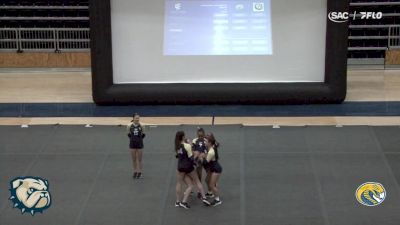 Replay: Coker vs Wingate | Mar 21 @ 6 PM
Replay: Coker vs Wingate | Mar 21 @ 6 PMMar 22, 2024
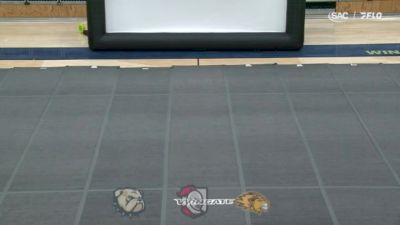 Replay: Wingate Tri-Meet - Acrobatics & Tumbling | Mar 15 @ 5 PM
Replay: Wingate Tri-Meet - Acrobatics & Tumbling | Mar 15 @ 5 PMMar 15, 2024
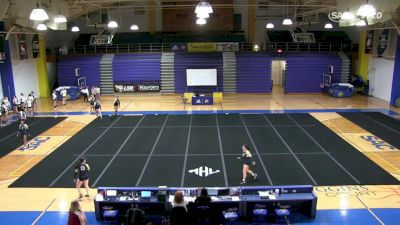 Replay: Mars Hill Tri-Meet | Feb 16 @ 6 PM
Replay: Mars Hill Tri-Meet | Feb 16 @ 6 PMFeb 17, 2024
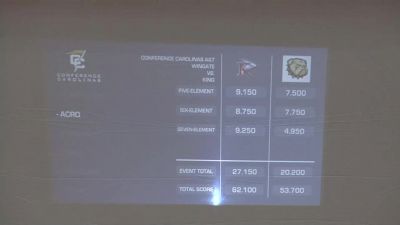 Replay: King (TN) vs Wingate - 2024 2024 King (TN) vs Wingate - Acrobatics & Tumbling | Feb 10 @ 4 PM
Replay: King (TN) vs Wingate - 2024 2024 King (TN) vs Wingate - Acrobatics & Tumbling | Feb 10 @ 4 PMFeb 10, 2024
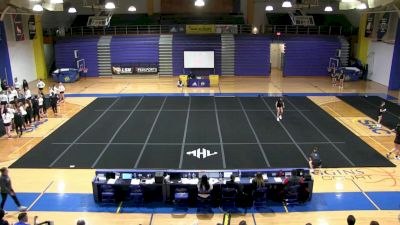 Replay: Belmont Abbey vs Mars Hill | Feb 10 @ 3 PM
Replay: Belmont Abbey vs Mars Hill | Feb 10 @ 3 PMFeb 10, 2024
 How to Watch: 2024 King (TN) vs Wingate - Acrobatics & Tumbling | Gymnastics
How to Watch: 2024 King (TN) vs Wingate - Acrobatics & Tumbling | GymnasticsFeb 10, 2024
 How to Watch: 2024 Wingate Tri-Meet | Gymnastics
How to Watch: 2024 Wingate Tri-Meet | GymnasticsFeb 8, 2024
 How to Watch: 2024 Wingate Tri-Meet | Gymnastics
How to Watch: 2024 Wingate Tri-Meet | GymnasticsFeb 8, 2024